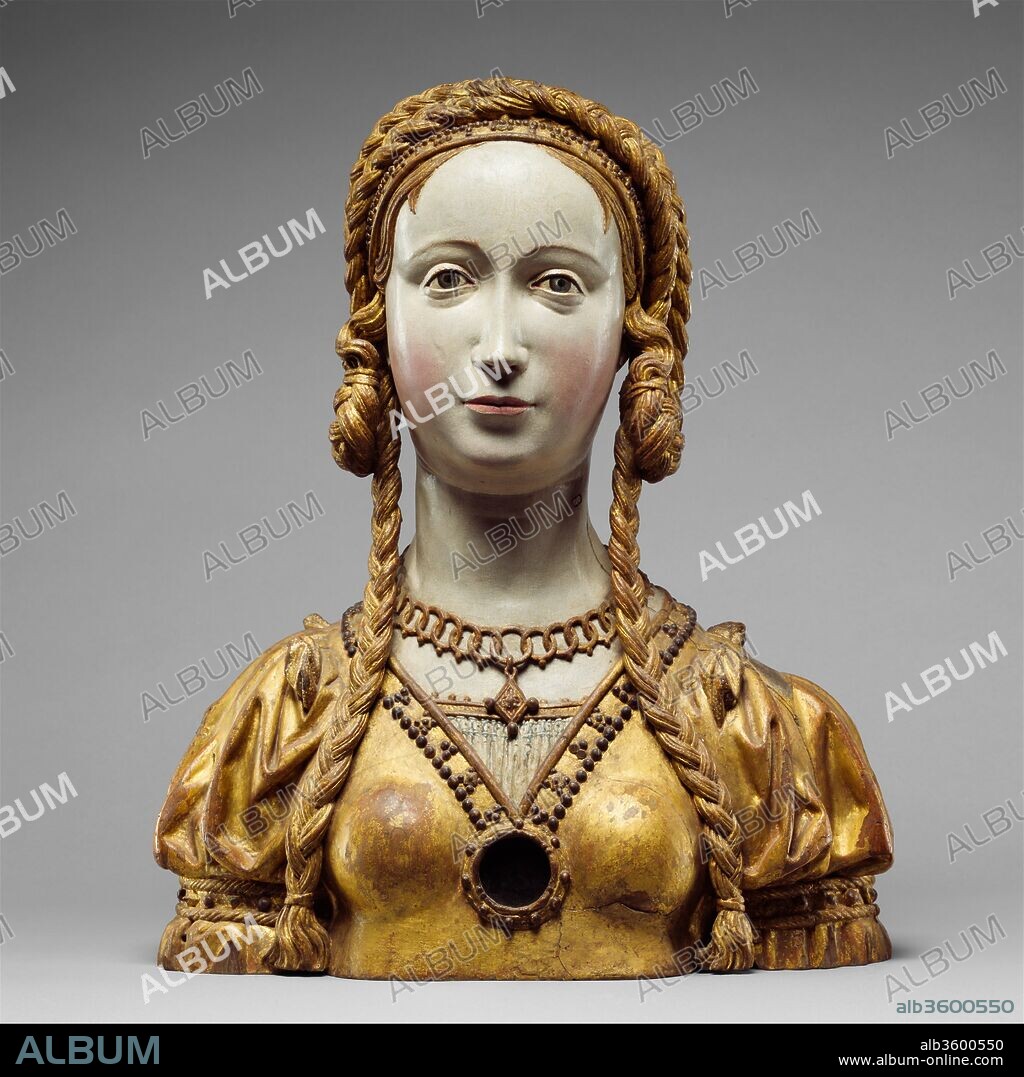alb3600550
Reliquary bust of a companion of Saint Ursula

|
Añadir a otro lightbox |
|
Añadir a otro lightbox |



¿Ya tienes cuenta? Iniciar sesión
¿No tienes cuenta? Regístrate
Compra esta imagen

Título:
Reliquary bust of a companion of Saint Ursula
Descripción:
Traducción automática: Busto relicario de una compañera de Santa Úrsula. Cultura: Belga, posiblemente Bruselas. Dimensiones: Altura: 17 7/8". (45,4 cm). Fecha: ca. 1520-30. Esta pieza es uno de los veintitrés bustos relicarios relacionados, muchos de los cuales tienen procedencia española. Además del compartimento visible en el cofre de la santa, una abertura con bisagras en la parte superior de su cabeza da acceso a otro contenedor de reliquias. Aunque durante mucho tiempo se creyó que era español, esta serie de bustos tiene un estilo más cercano al trabajo de escultores de las Tierras Bajas del sur (Brabante o posiblemente Bruselas), cuya influencia en la escultura española en el período gótico tardío fue profunda. Es posible que algunos ejemplos hayan sido tallados en España por artistas brabantinos que emigraron a España durante este período de estrechas relaciones políticas y artísticas a finales del siglo XV y principios del XVI. Otra posible explicación es que el emperador Carlos V de los Habsburgo donó las piezas a las iglesias españolas, o que los funcionarios españoles de su corte en Bruselas adquirieron las piezas y las trajeron a España.
Reliquary bust of a companion of Saint Ursula. Culture: Belgian, possibly Brussels. Dimensions: Height: 17 7/8 in. (45.4 cm). Date: ca. 1520-30.
This piece is one of twenty-three related reliquary busts, many of which have a Spanish provenance. In addition to the compartment visible on the saint's chest, a hinged opening at the top of her head gives access to another relic container.
Although long believed to be Spanish, this series of busts is closer in style to the work of sculptors from the sourthern Lowlands (Brabant or possibly Brussels), whose influence on Spanish sculpture in the late Gothic period was profound. Some examples may well have been carved in Spain by Brabantine artists who migrated to Spain during this period of close political and artistic relations at the end of the fifteenth and in the early sixteenth century. Another possible explanation is that the Hapsburg emperor Charles V donated the pieces to Spanish churches, or that Spanish officials at his court in Brussels acquired the pieces and brought them back to Spain.
Técnica/material:
Oak, polychromed and gilt on plaster ground; glass opening for relic
Museo:
Metropolitan Museum of Art, New York, USA
Crédito:
Album / Metropolitan Museum of Art, NY
Autorizaciones:
Modelo: No - Propiedad: No
¿Preguntas relacionadas con los derechos?
¿Preguntas relacionadas con los derechos?
Tamaño imagen:
3981 x 3982 px | 45.4 MB
Tamaño impresión:
33.7 x 33.7 cm | 13.3 x 13.3 in (300 dpi)
Palabras clave:
 Pinterest
Pinterest Twitter
Twitter Facebook
Facebook Copiar enlace
Copiar enlace Email
Email
